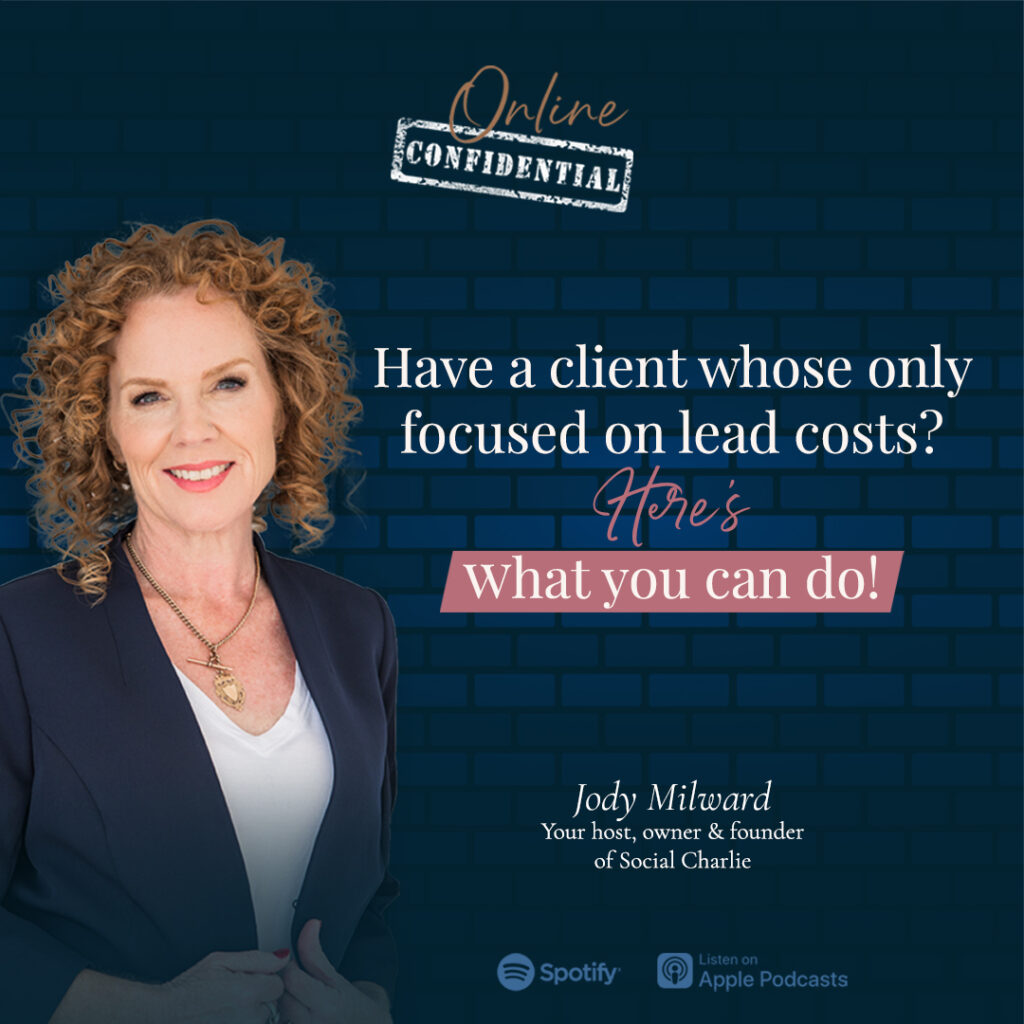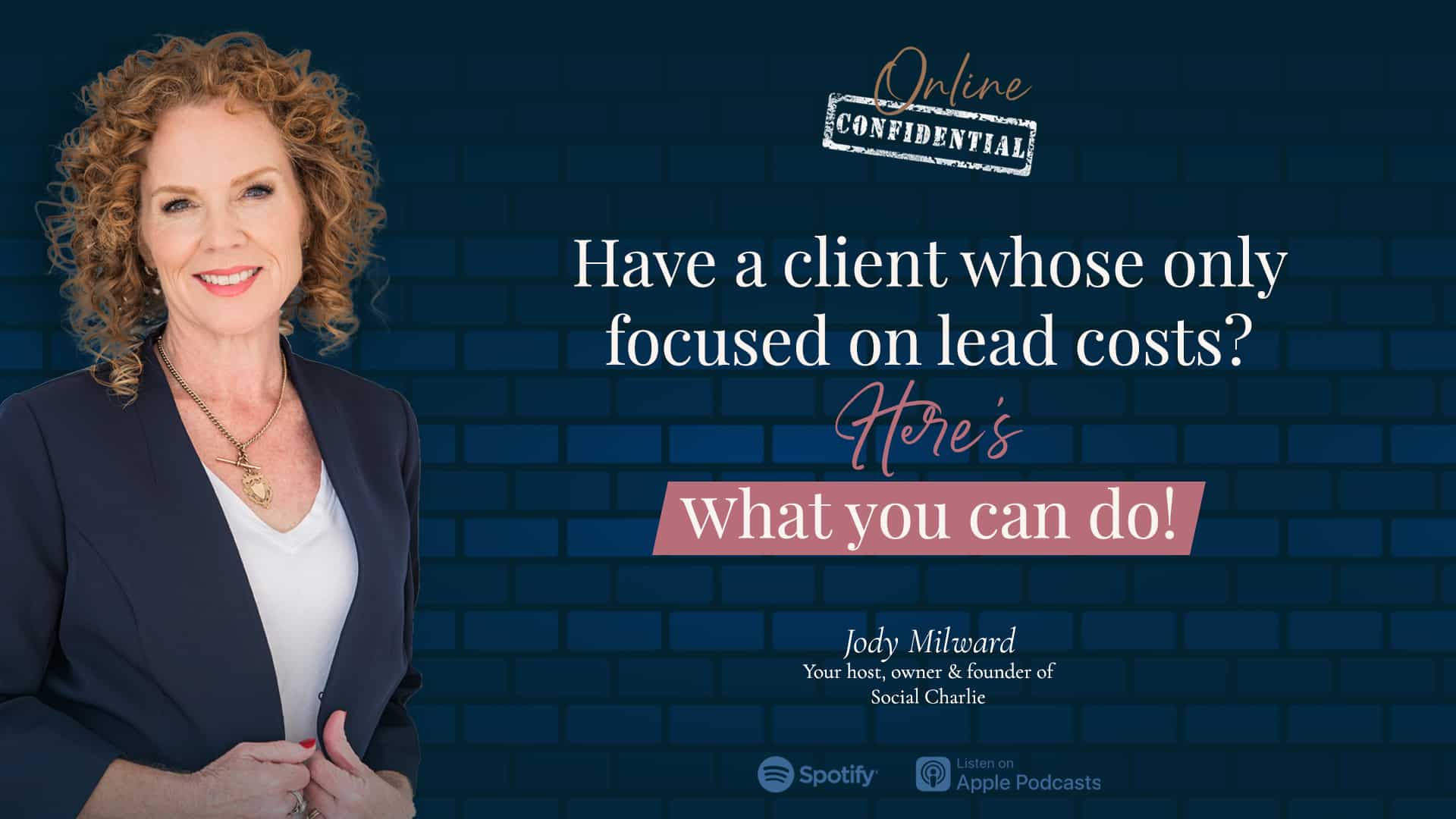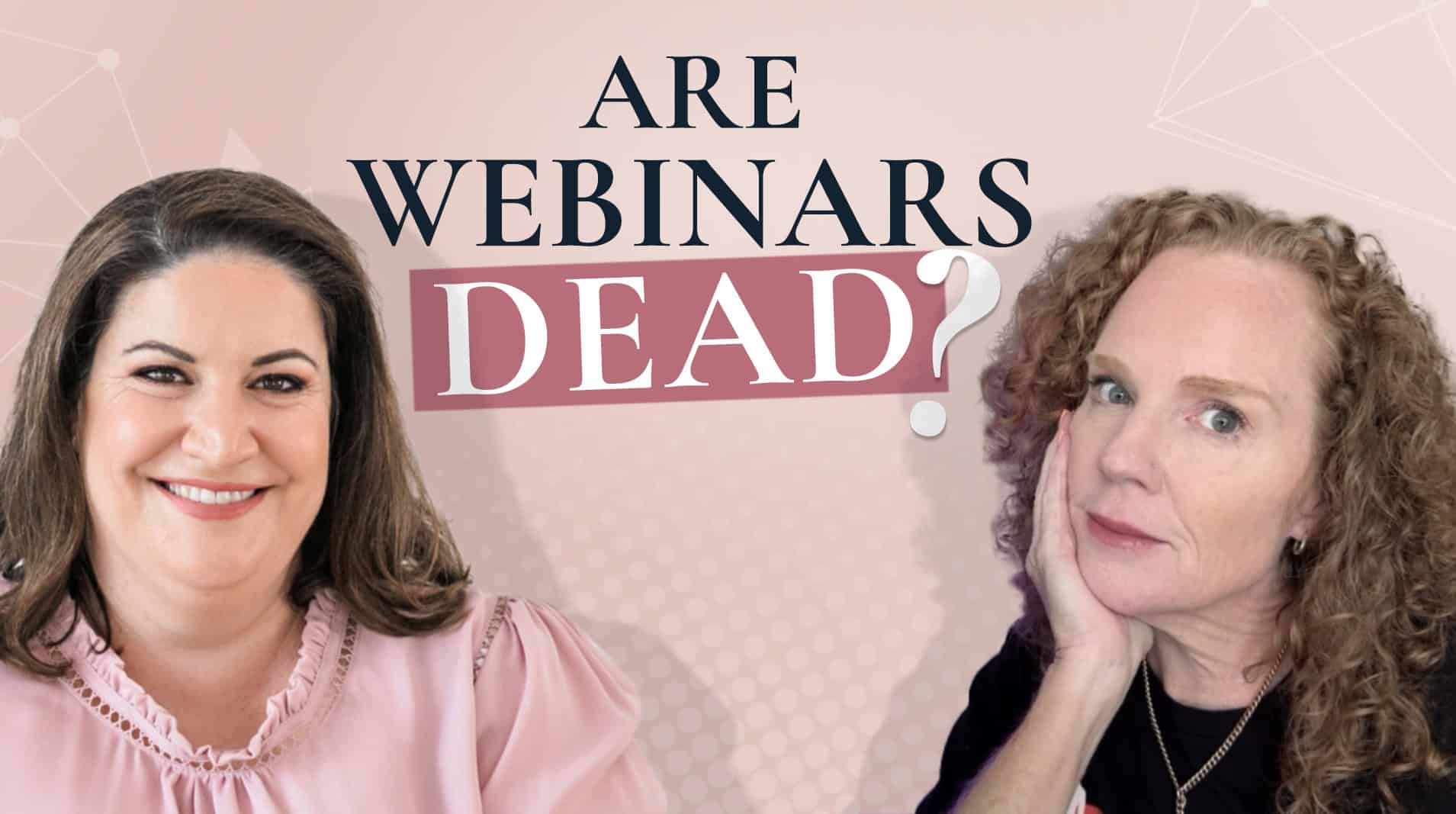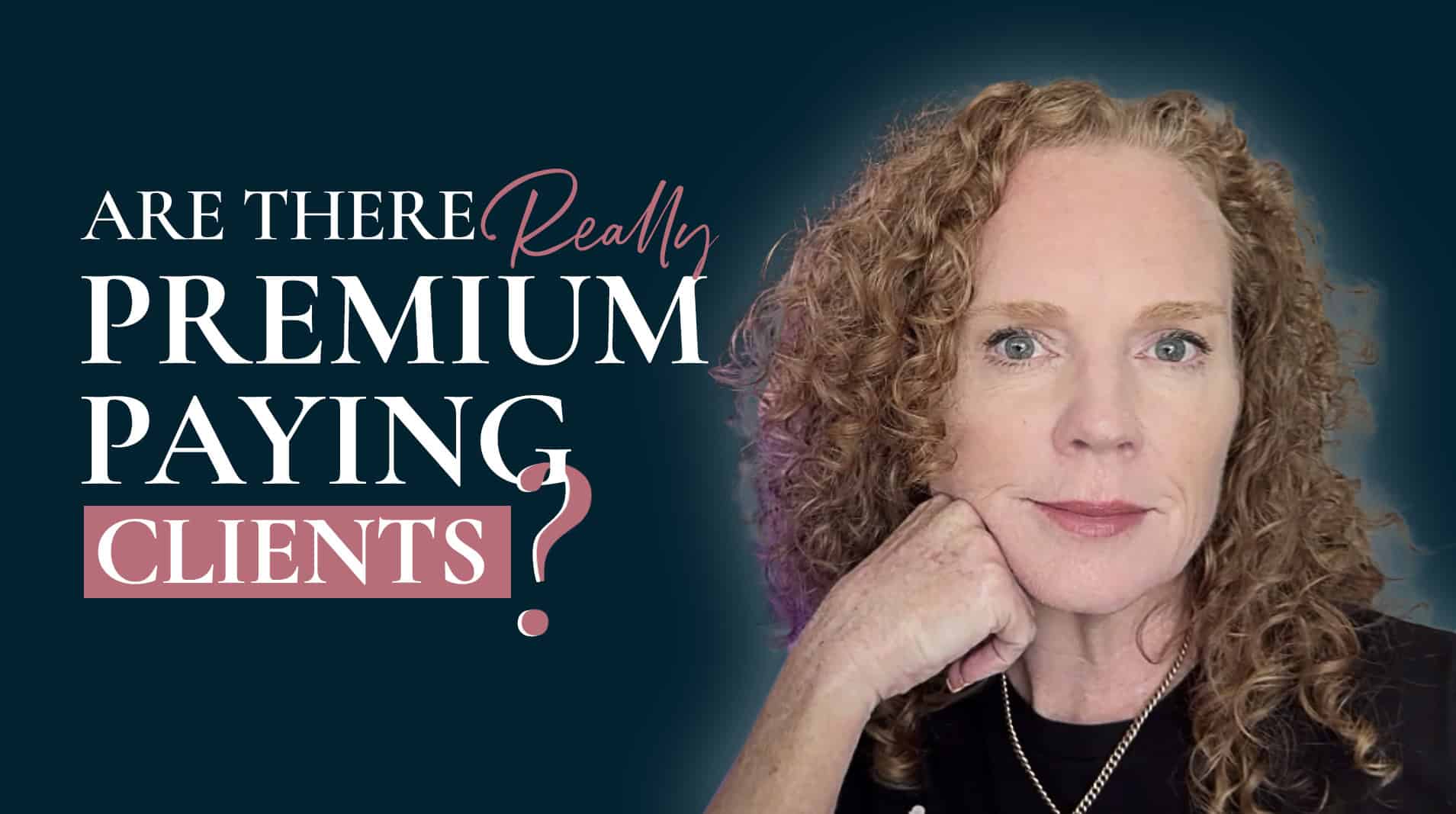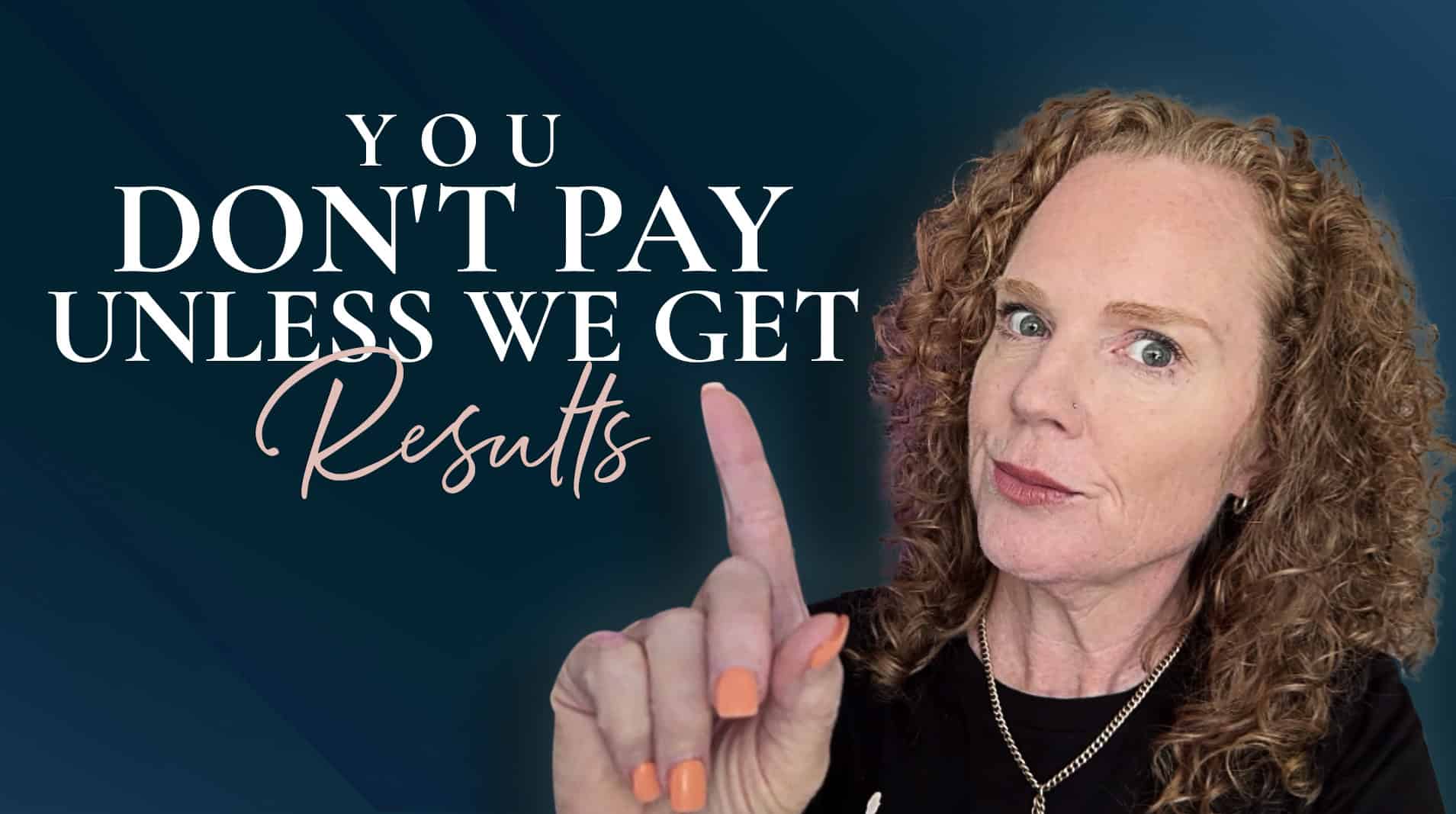Key Highlights:
[00:00:54] Helping clients understand the big picture behind lead costs
[00:02:26] What you need to focus on beyond just finding cheap leads
[00:03:12] Why chasing low lead costs isn’t always the best tactic
[00:05:03] Funnel benchmarks you need to know
[00:08:23] A conversion optimization tip for webinar funnels
What do you do when you have a client who is so focused on how much their lead costs are, that they’re even going in there and turning their ads off if they go over the price? Well, that’s what we are looking at today in this episode of Online Confidential, where I take you behind the scenes of ‘Secret Ad Manager’ business.
So it either seems to be a feast or famine when it comes to having clients who actually know their numbers. More often [00:00:30] than not, they don’t really know their benchmarks, unfortunately. When they do, it’s fantastic. But it can also come with some angst sometimes as well because they could be so focused on what they want to spend per lead that they actually lose sight of the bigger picture.
Understand the big picture behind lead costs
It’s great when they know their numbers and they know their data, but maybe they don’t know the full picture like you do. You, who is the [00:01:00] expert and manager.
We often come across this when we get clients on board who have been running their own ads and they have some sort of knowledge and expertise, but not the in-depth knowledge that an ad manager has.
So they may just be hell bent focused on a cost per lead, say $3 lead, for example, and all their leads must be under $3. And if there’s a $3 and $5. Heaven forbid, you are going to get a [00:01:30] message at 10 o’clock at night saying, ‘turn that off! It’s over $3!’. Yes, I’m being a bit over dramatic here, but you know what I mean.
If you’re an ad manager, what do you do about that? Well, it comes back to looking at the overall numbers. Like if they’re so obsessed with how much they can you know, what their cost per lead is. Do they actually know how much they can afford to pay for a lead rather than just [00:02:00] say, this is my lead cost.
Have they gone through and looked at all the numbers so that if they get 100 opt-ins and if their funnel converts at 2% to get a sale, what is that actual number then, when you calculate it backwards that they can actually spend per lead. If they get a hundred people in to get two sales, it might be $5 a lead and they’re still ahead.
Focus on leads that convert
So knowing those things, it’s also educating them. While we love cheap leads, it looks [00:02:30] amazing, right? You see all these leads pouring in and you go, ‘YES, I’m invincible!’ like the guy from the Bond movie with the pen. You may think it’s great, but do those leads convert? That’s going to be what the data tells us and what you’re going to keep an eye out for.
And I mean, they look great when you pop the screenshots around. This is how cheap our leads are. Yes, but are they converting? Because ultimately, that’s what businesses want. We’re not just getting leads for the sake of getting leads. We want them to [00:03:00] convert, to be customers, to purchase something eventually.
So making sure our clients are educated about that. Looking at the data and looking at the numbers.
Let’s look at example. A case where you’ve got a client and they want to get leads at a certain cost and they’re doing a webinar funnel, for example. So there are sales on the back end of it, but they’re saying, ‘we want to get leads at this price’.
However, you’ve got some leads that are coming a bit over the price. But that cost [00:03:30] per sale is better. What’s more important and more valuable here? Well, this is where it comes back to looking at the numbers.
Look at the numbers
Now I’ve got a lot of numbers here for you. So let’s just sit down and contemplate and think of these numbers and I’ll try to go through them. Okay?
So, if you’ve got a client and let’s just make it nice and round, they want to get $10 leads. That’s how much they just have said. Leads have to be under $10. Okay, great. So [00:04:00] you have some campaigns, some ad sets, where the leads are coming in at $7. Hooray! And the cost per acquisition is $125 and they want the cost per acquisition to be under $150.
Great, all the benchmarks are being met. Then you have another ad set where the cost per lead is $13. Oh. And then the cost per acquisition is $80. [00:04:30] Hmm. What do you do then? That cost per lead is high. The cost per acquisition is way under, it’s way under the leads that are coming in at $7. So if your client’s going, they’re coming in at $13, turn them off.
Well, to me, I go, well, a purchase is actually a more important event. That’s what we want. So rather than just having a look and saying, these are $13 leads, turn them off. These are $7 leads, keep them going, bump them up. We’ll get more in and we may get more sales. [00:05:00]
Look at the numbers. If you had a hundred leads come in and they paid $13 each, then that’s $1,300 to get those hundred leads in.
If your funnel converts at 2% and you’re selling a $997, or even numbers, a $1,000 product, at a 2% conversion rate, you’ll get two sales for those hundred leads that have gone through. So you’ve made $2,000, [00:05:30] okay? It’s cost you $1,300 to get in those $2,000 sales. Okay, so you’re ahead.
$700, right? $2,000. And you’ve paid $1,300 [00:05:50]
[00:05:50] So $2,000 in sales, $1,300 to get those sales. Therefore, your cost per requisition is about $650 per sale. Now, if we look at the $7 leads, and if we got a hundred of them in, that’s $700. And [00:06:00] again, if it’s the same conversion at 2% for that audience or those leads that are coming in at $7, then you are making $1,300 for those two sales.
Okay? You spent $700 to get 100 leads in at $7, you made two sales $2,000, you’ve made $1,300. Okay, so therefore that cost per acquisition for those two sales is $350. That is nice. Push those $7 leads.
[00:06:35] Now, if we look at spending $1,300 on those $7 leads, we would get 185 leads in, and that if it’s still converting around, that 2% [00:06:40] would be 3.7 sales. So let’s just round that up to 4. So if we got four sales in for the $1,300 ad spend, that would be a cost per acquisition of $325. Okay.
I’m looking at my maths, so $325, so that’s great as long as they’re all converting and they’re converting at that 2%. If those leads are [00:07:10] coming in at $7, but the conversion rate on the funnel drops below 2% and that cost requisition ends up going up, then that cheaper lead is not necessarily a good lead at all.
So look at the numbers. Okay? So if you’ve got a client that’s going, ‘I need to get this lead, I need to get this lead’. First of all, look and see how much can they actually afford to pay per lead? If the leads are coming in under your KPIs, awesome, amazing. Love it. But are they [00:07:40] converting? Look at those numbers and the conversion rates.
Then if there are ones that are slightly over and they are converting, look at the numbers there as well and work from that. Okay. Don’t just have a look and guesstimate. Don’t do a knee-jerk reaction when you see the lead price is up a bit high, or whatever it may be. Ask, what are the overall goals of the campaign and are they within benchmarks as well?
Rather than just picking, having a bit of an arbitrary number, make sure the numbers are [00:08:10] solid and they compliment the whole conversion numbers throughout the whole funnel. [00:08:23]
A final tip for webinar funnels
[00:08:23]Another thing that I would like to mention here, that if you are running a webinar funnel like this where you are optimizing it for leads, people are coming in, watching a webinar and purchasing. If you’ve got a good amount of purchase data on here, test optimizing for purchases. Now that might seem like a bit of a wild idea, right?
But give it a go [00:08:36] because if you’ve got that data coming through, then you’re going to tell Facebook, ‘go out and find more people who are likely to purchase’. And what you may well find is that cost per acquisition may come down even more. But what you will likely find out is that the cost per lead goes up a bit as Facebook goes to find that better quality audience who is more likely to convert.
That’s just a little tip there for you, something to test.
I hope you found this valuable today. If you’ve got any other comments or information, just send us an [00:09:06] email at success@socialcharlie.com I’d love to hear from you. Otherwise, tap that button and follow along for more information about Facebook ads and running ads for clients.
